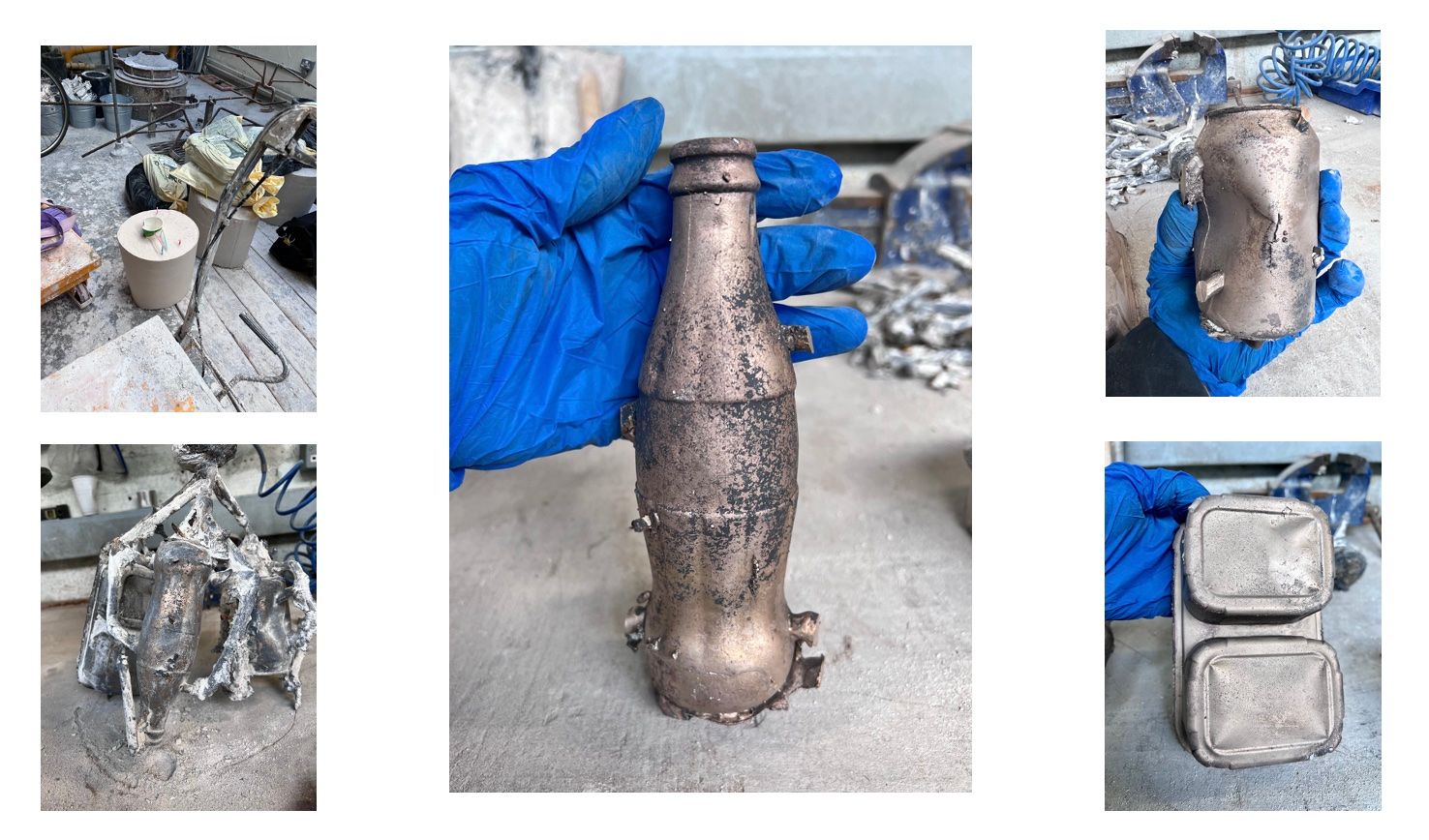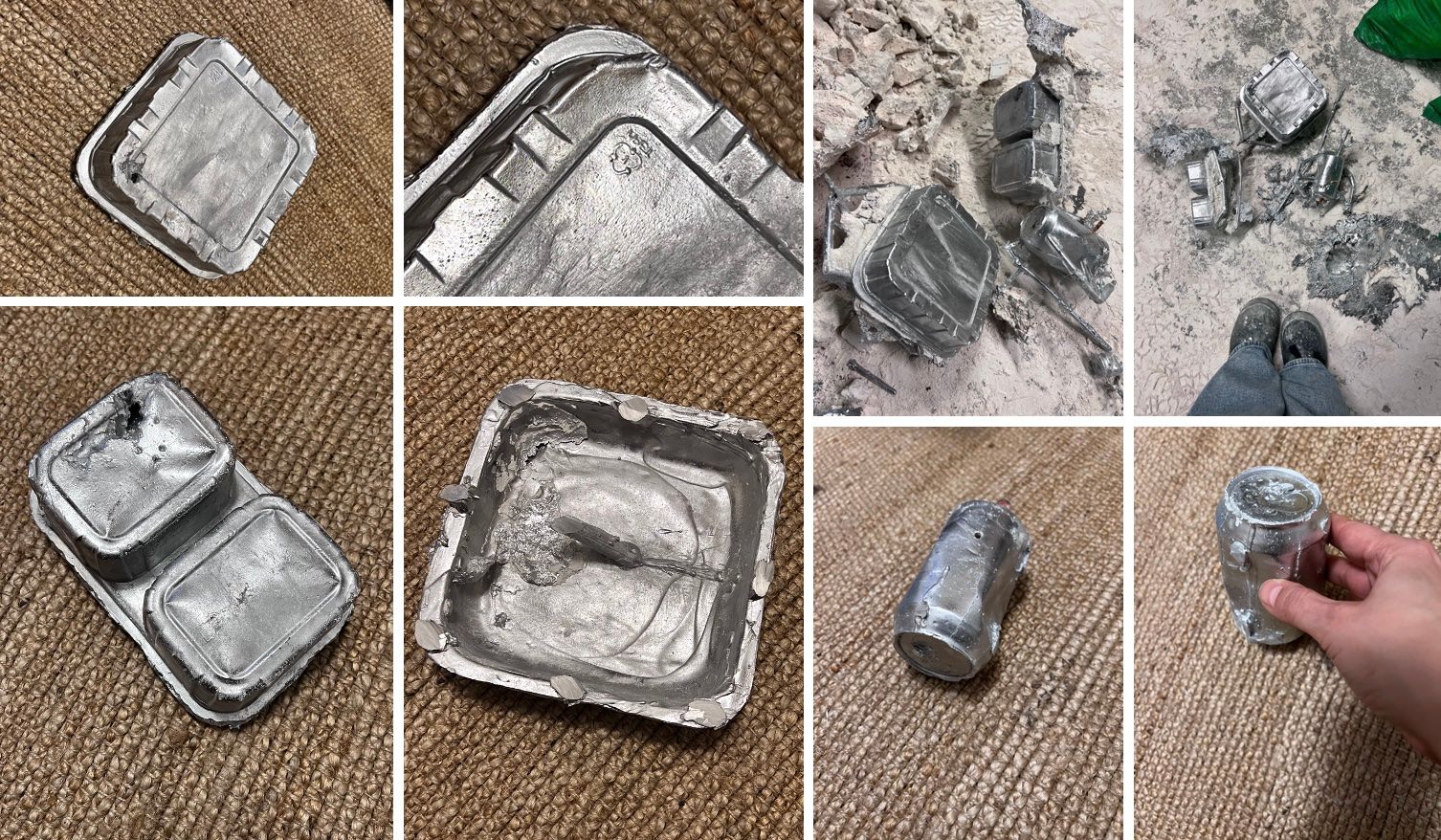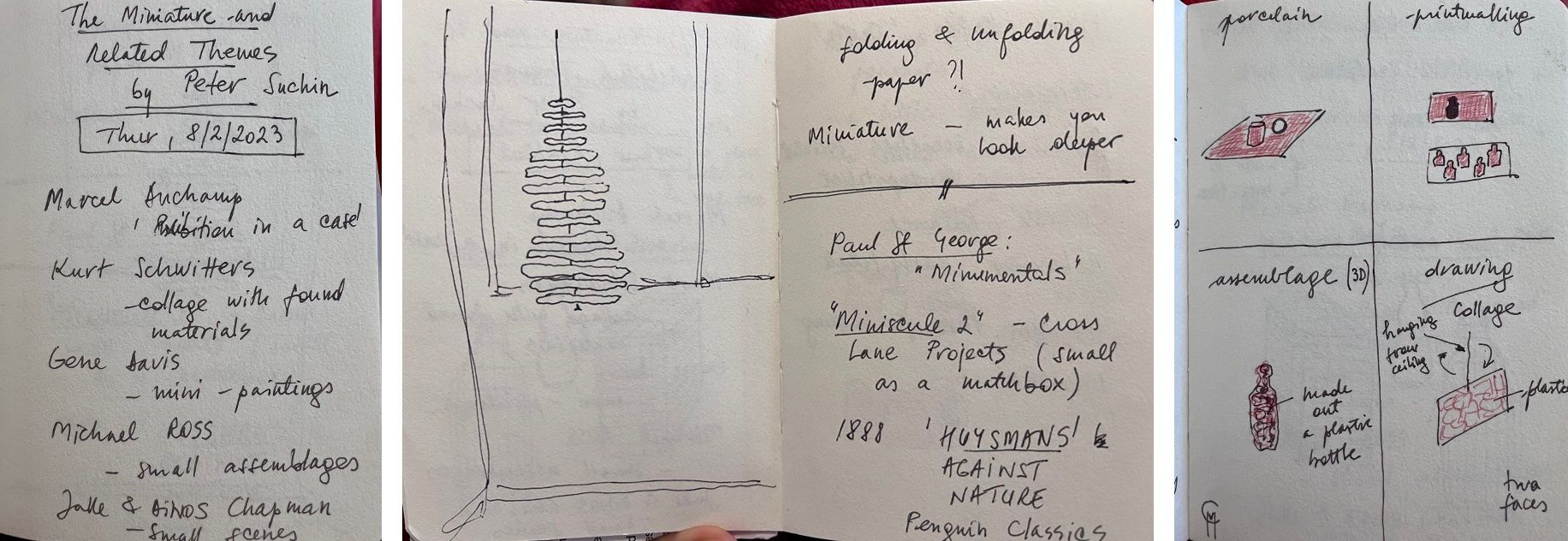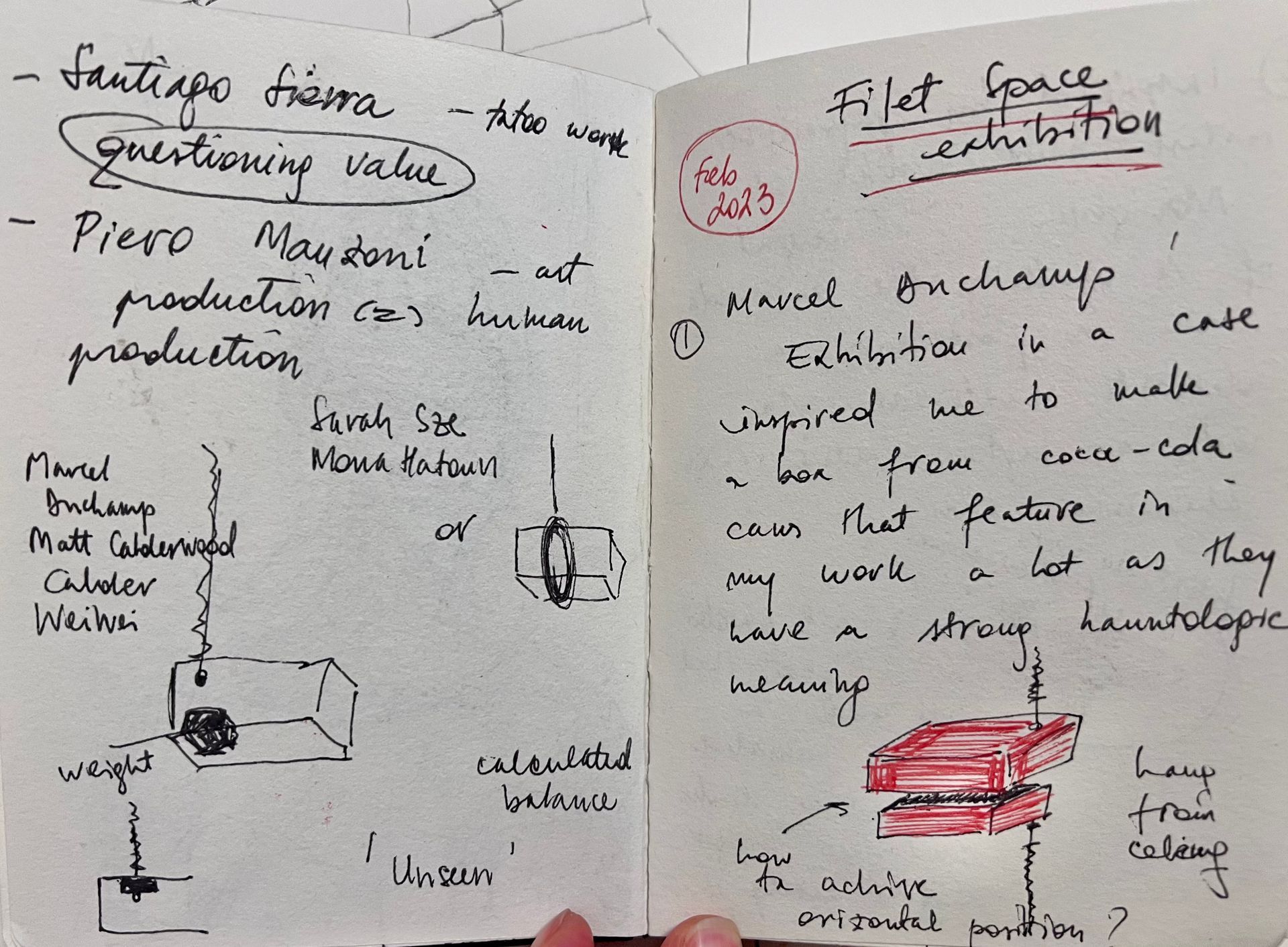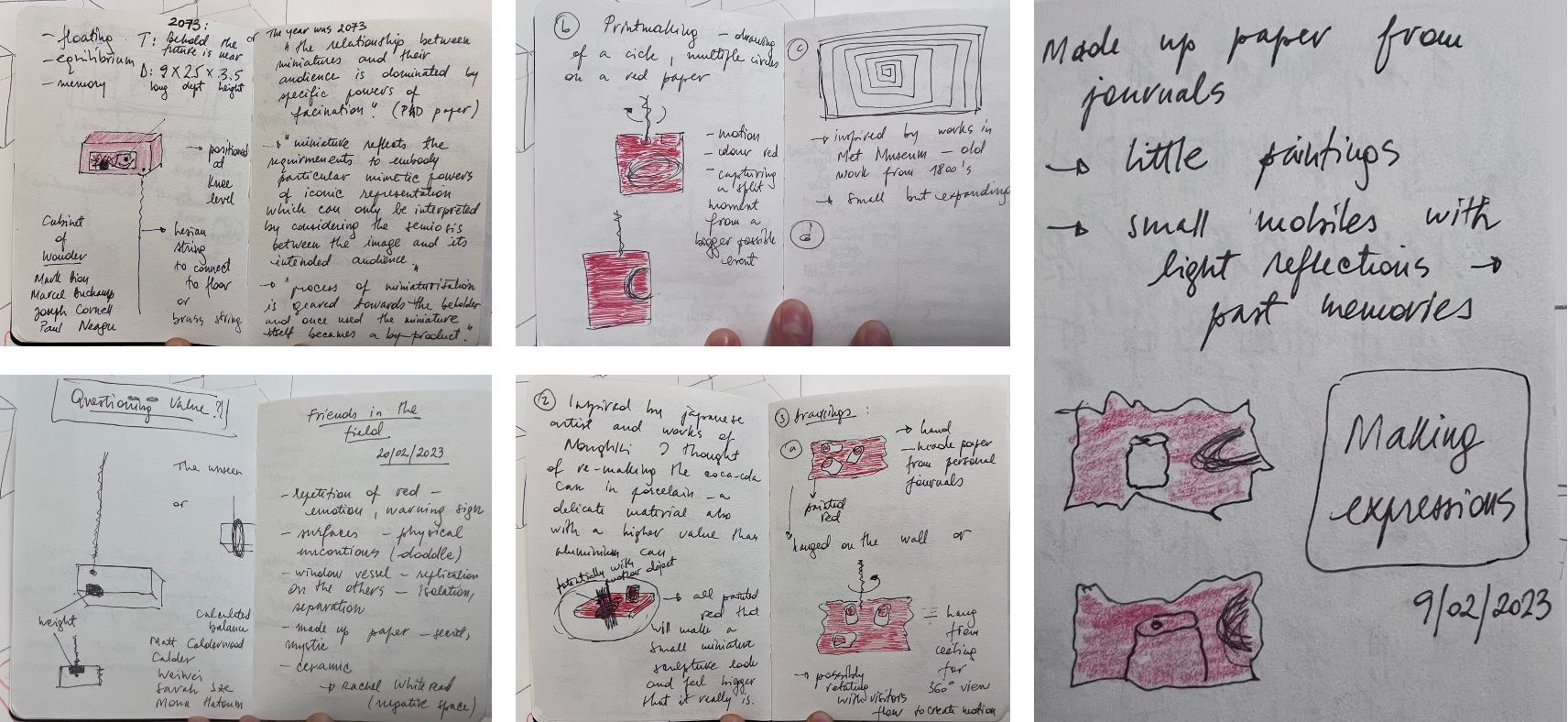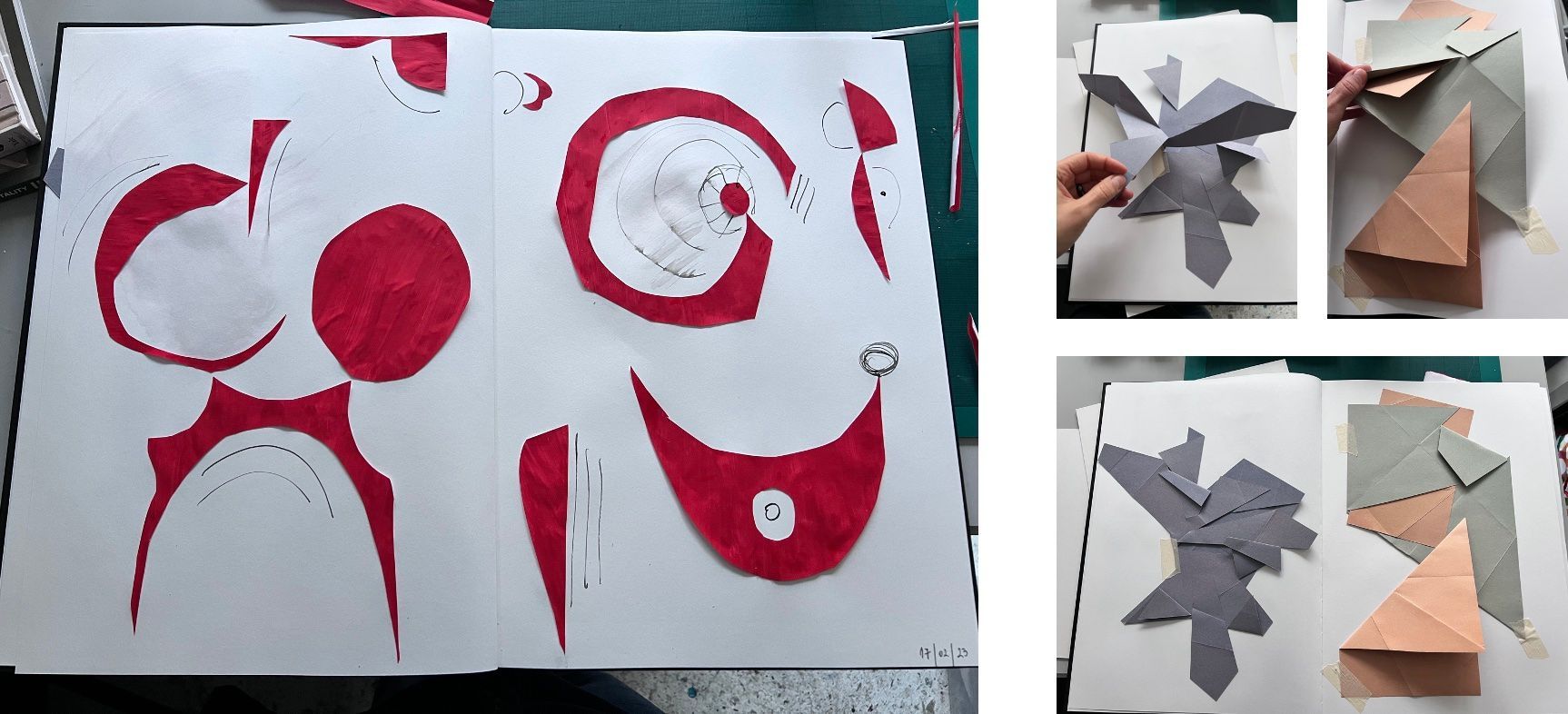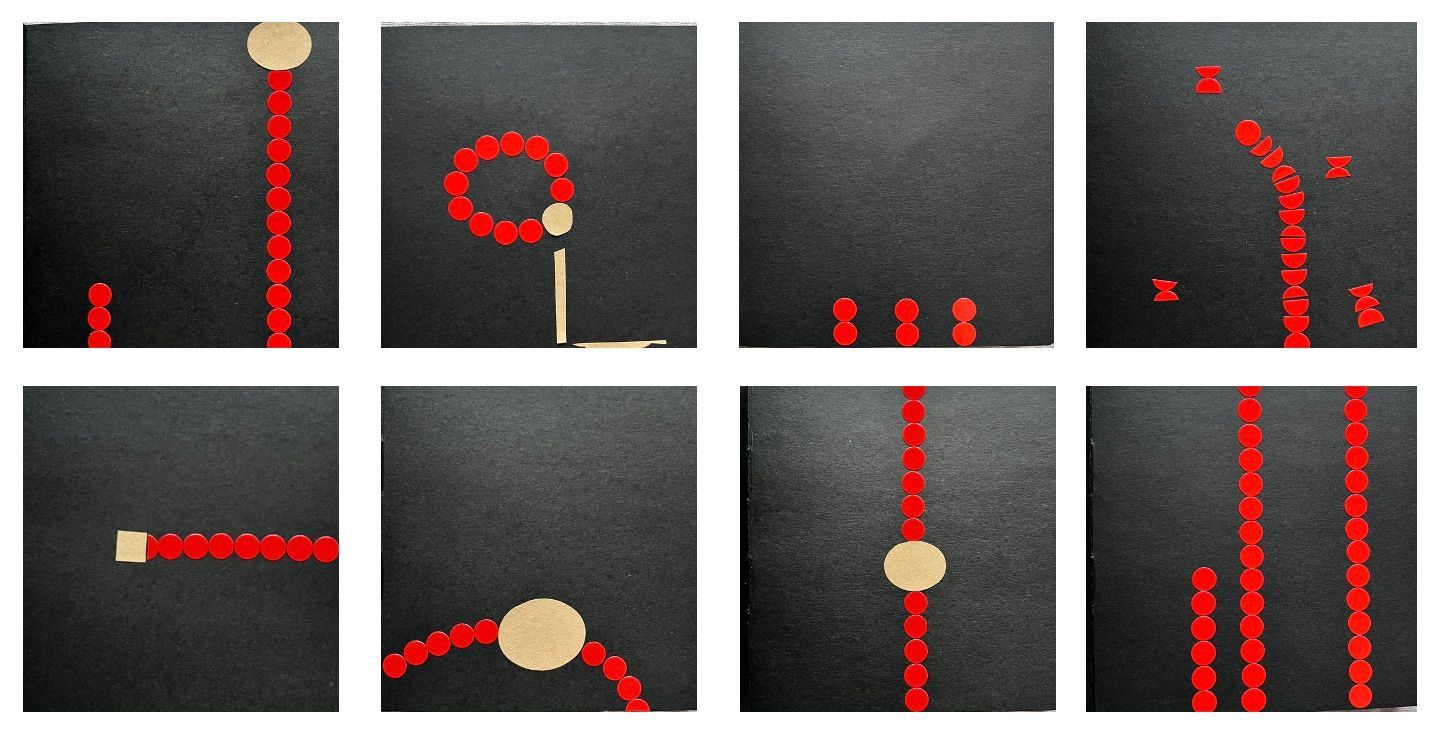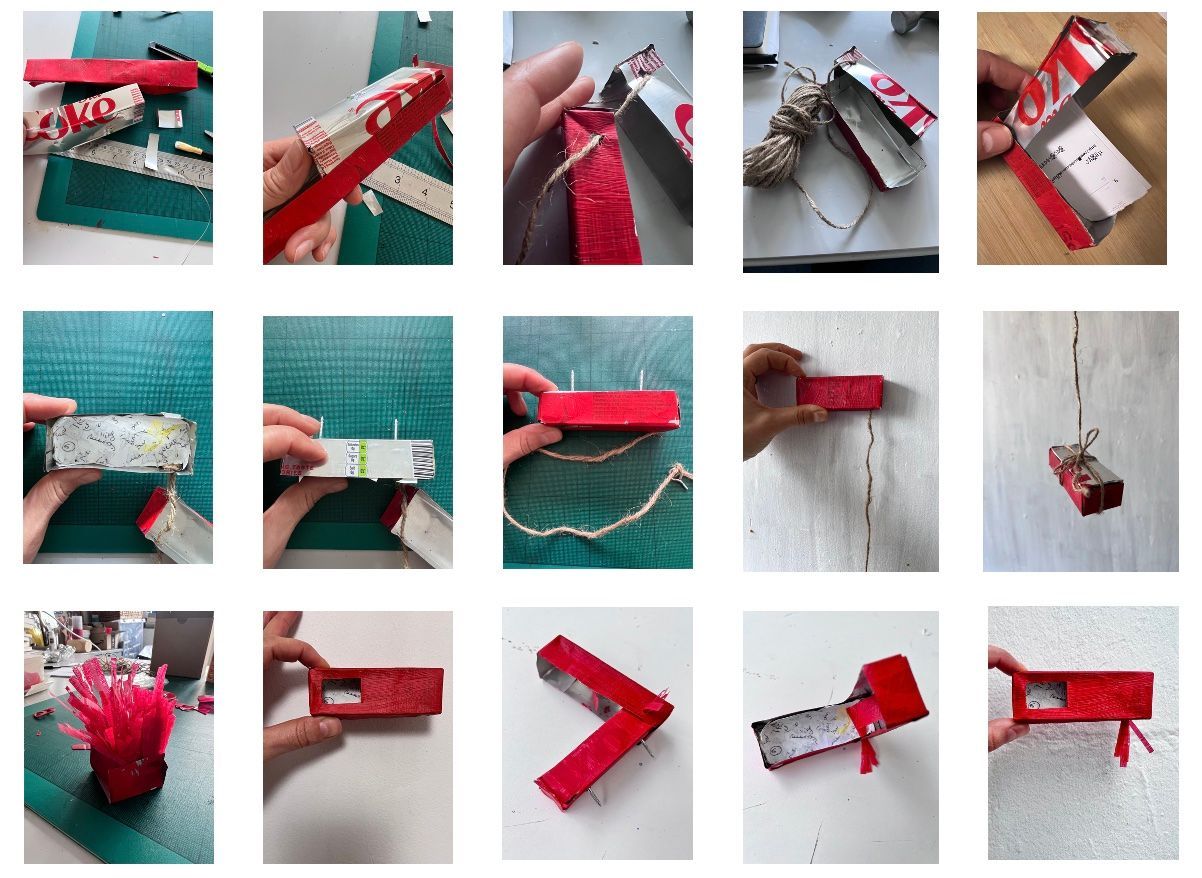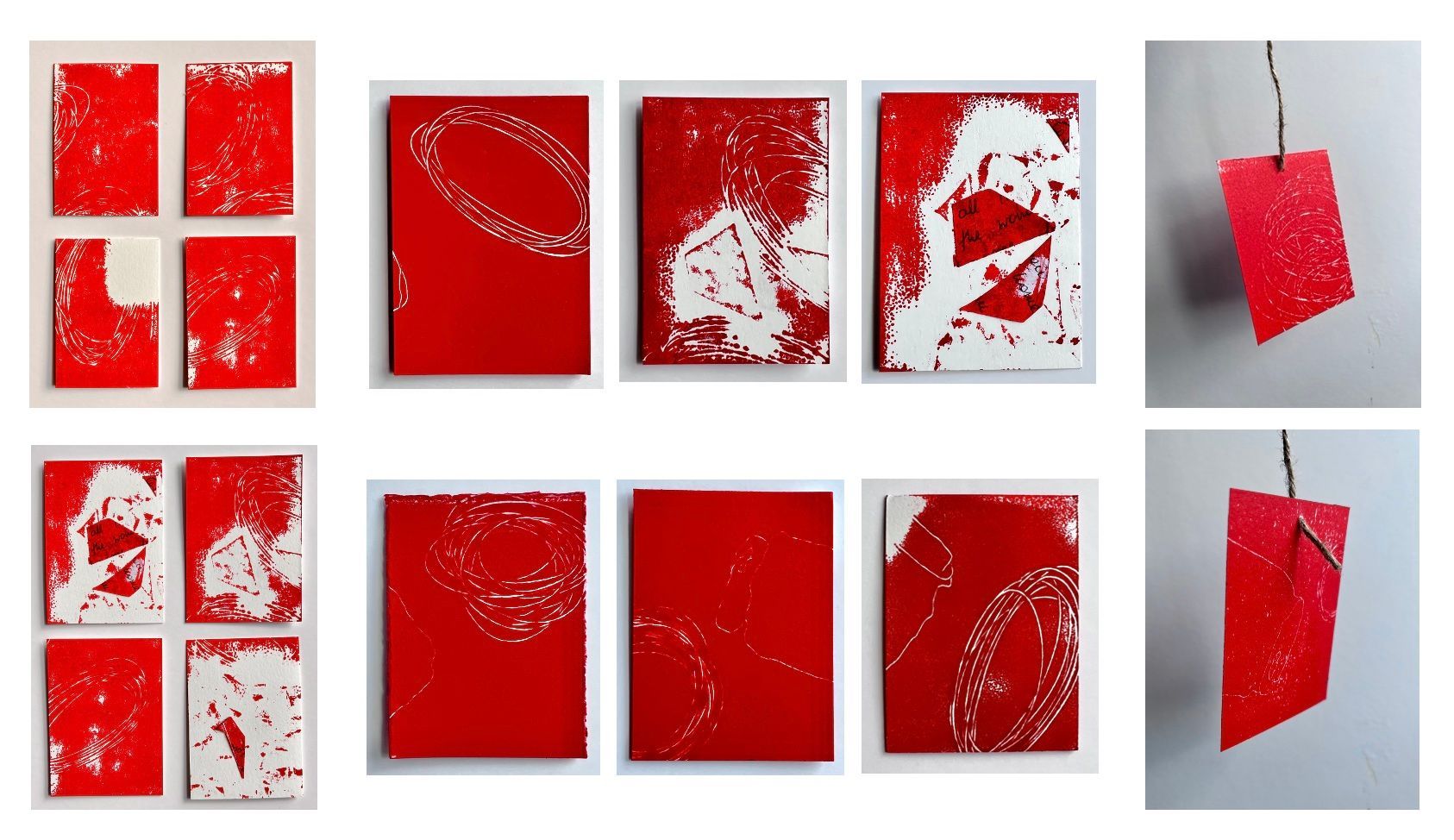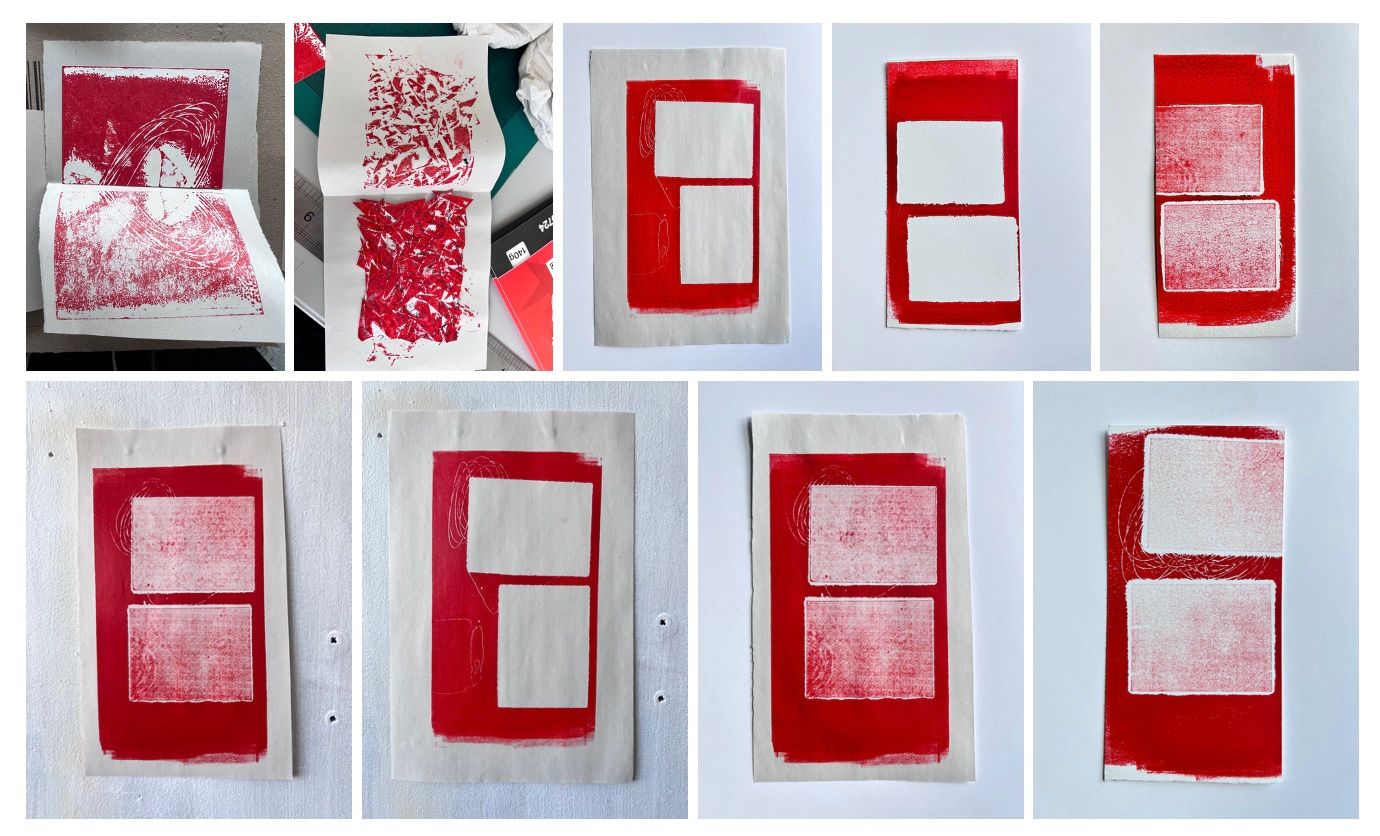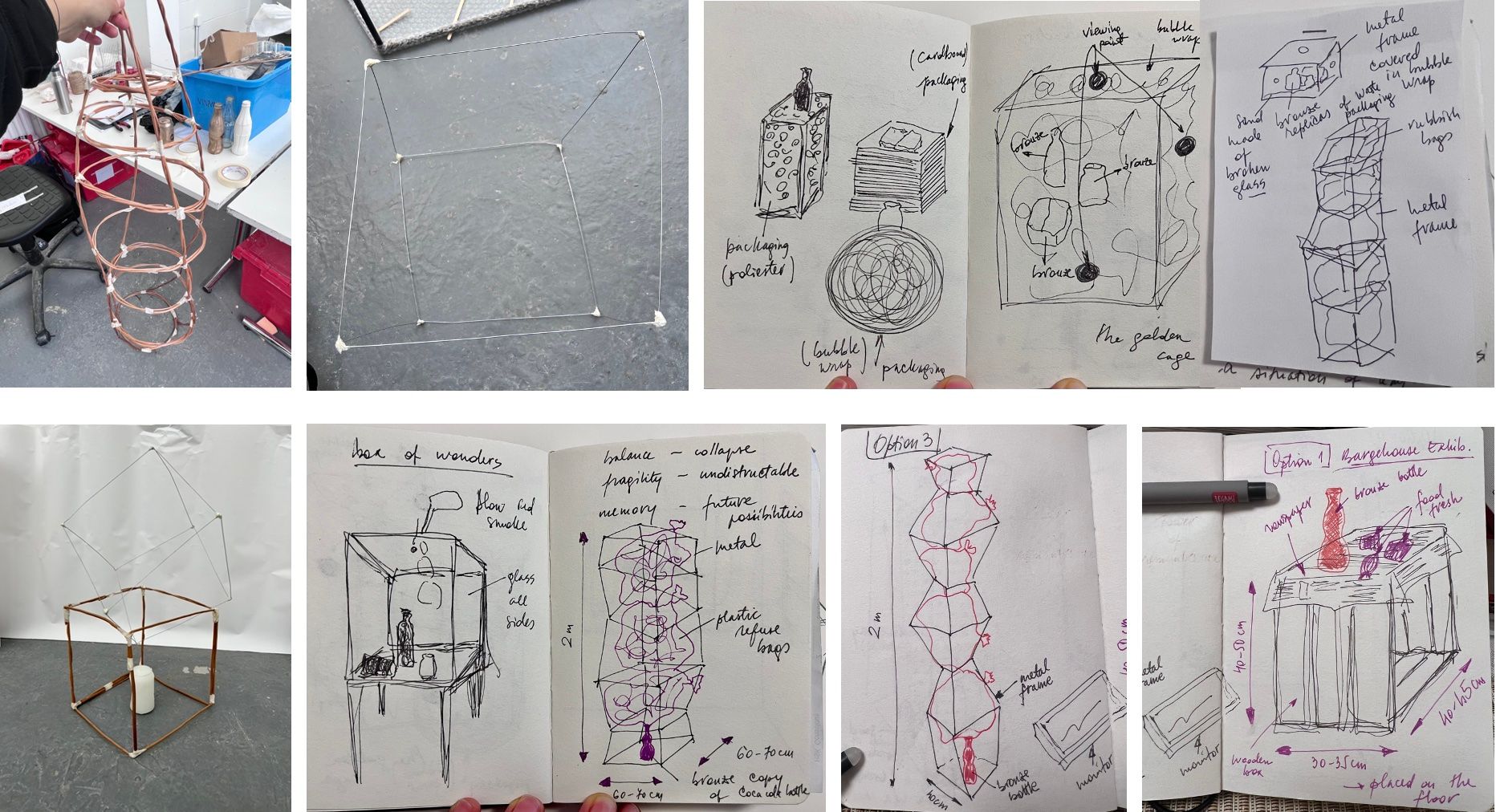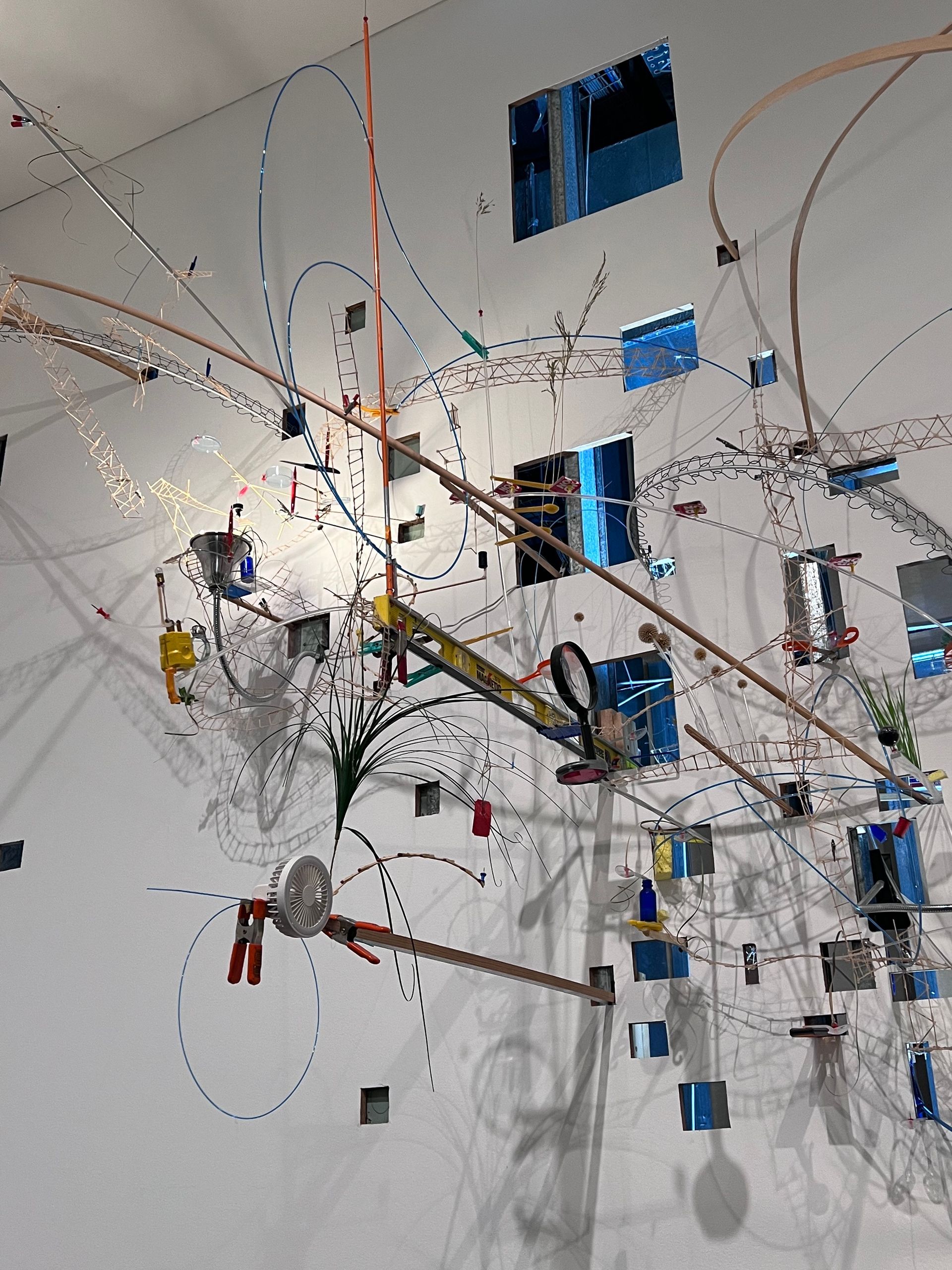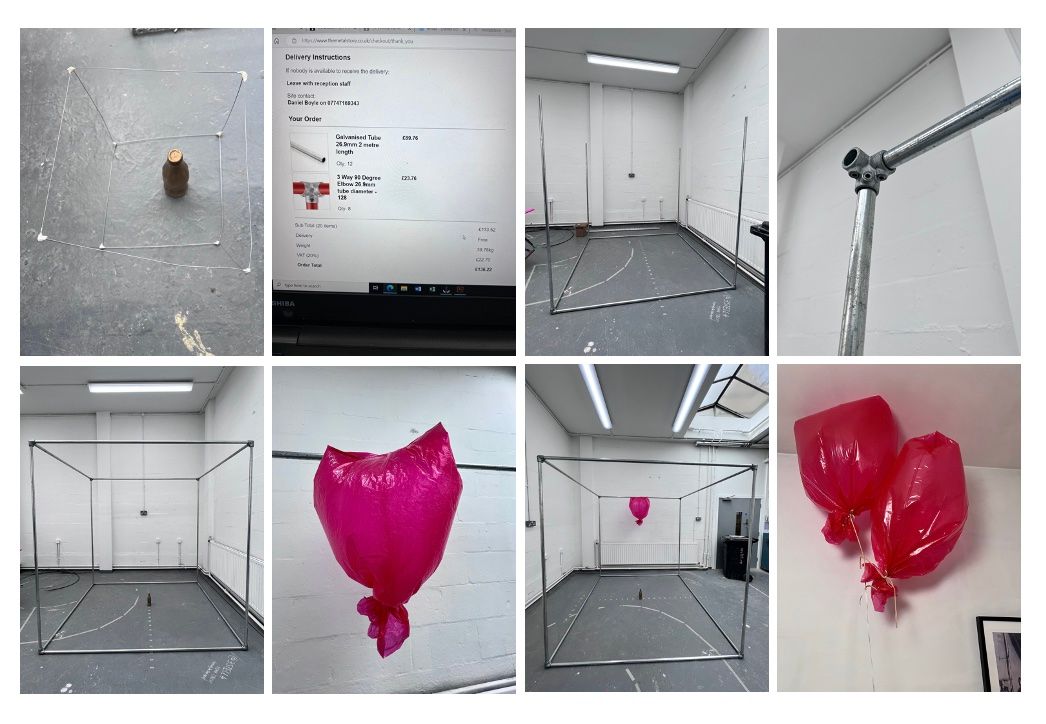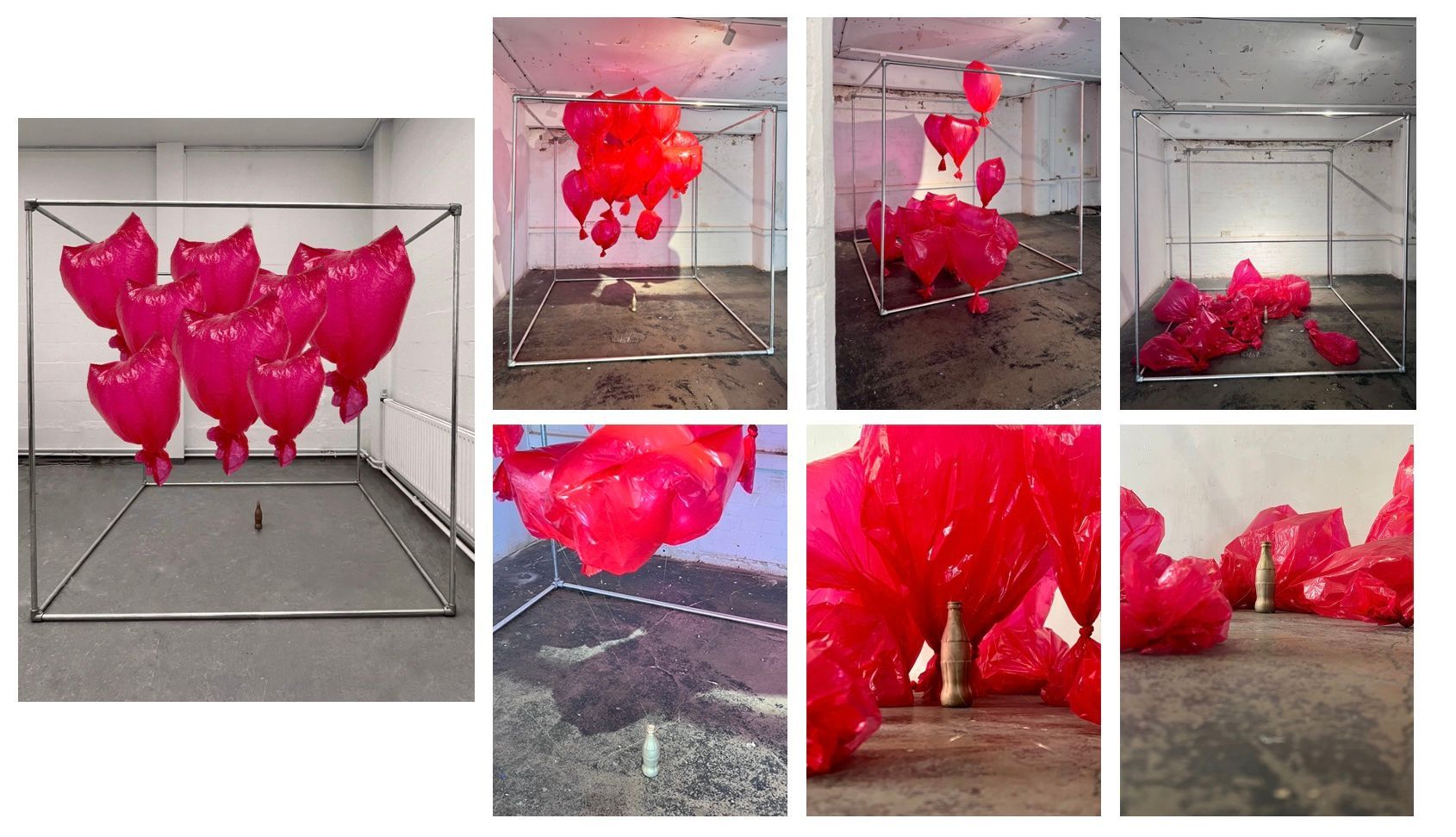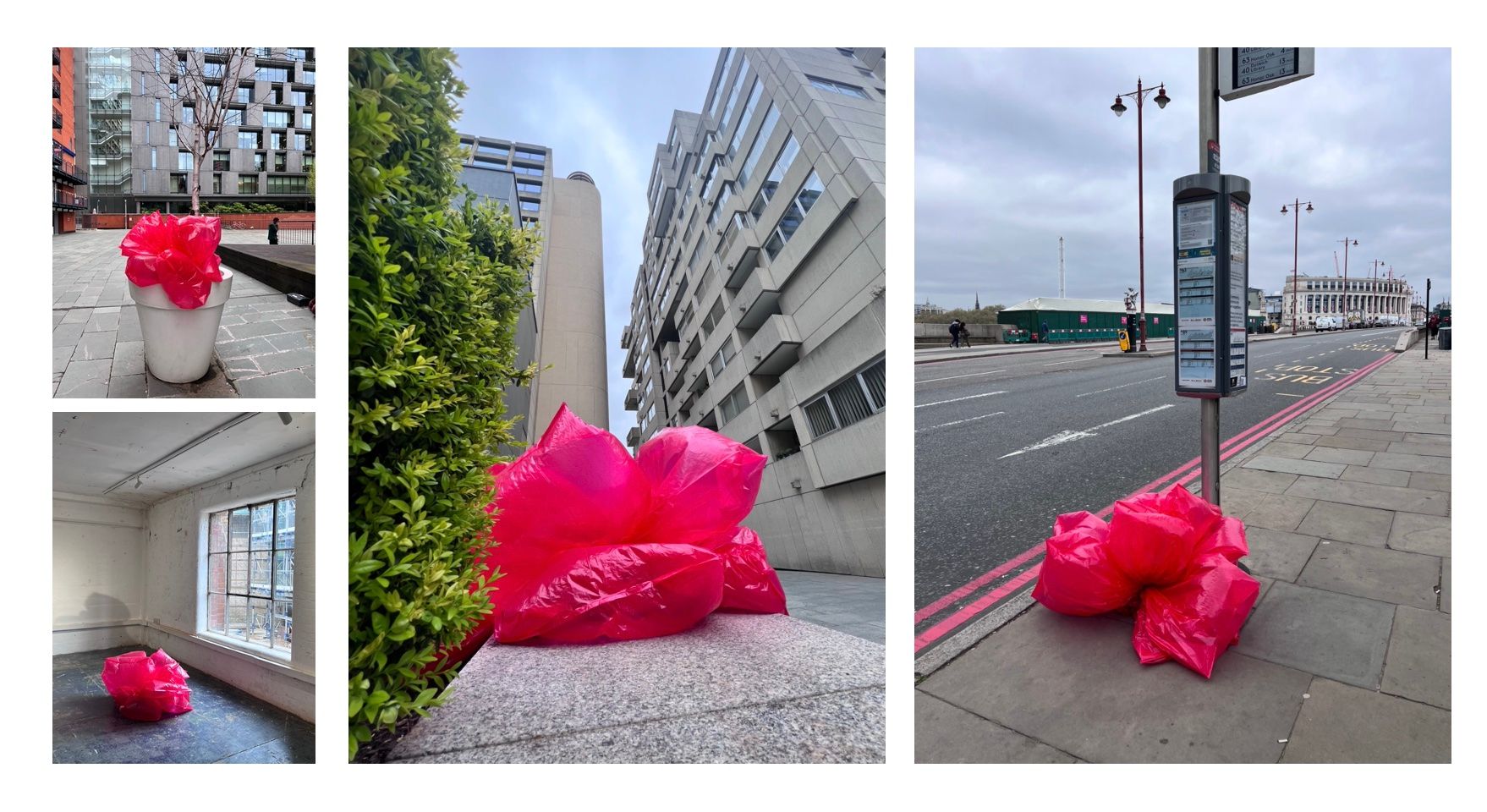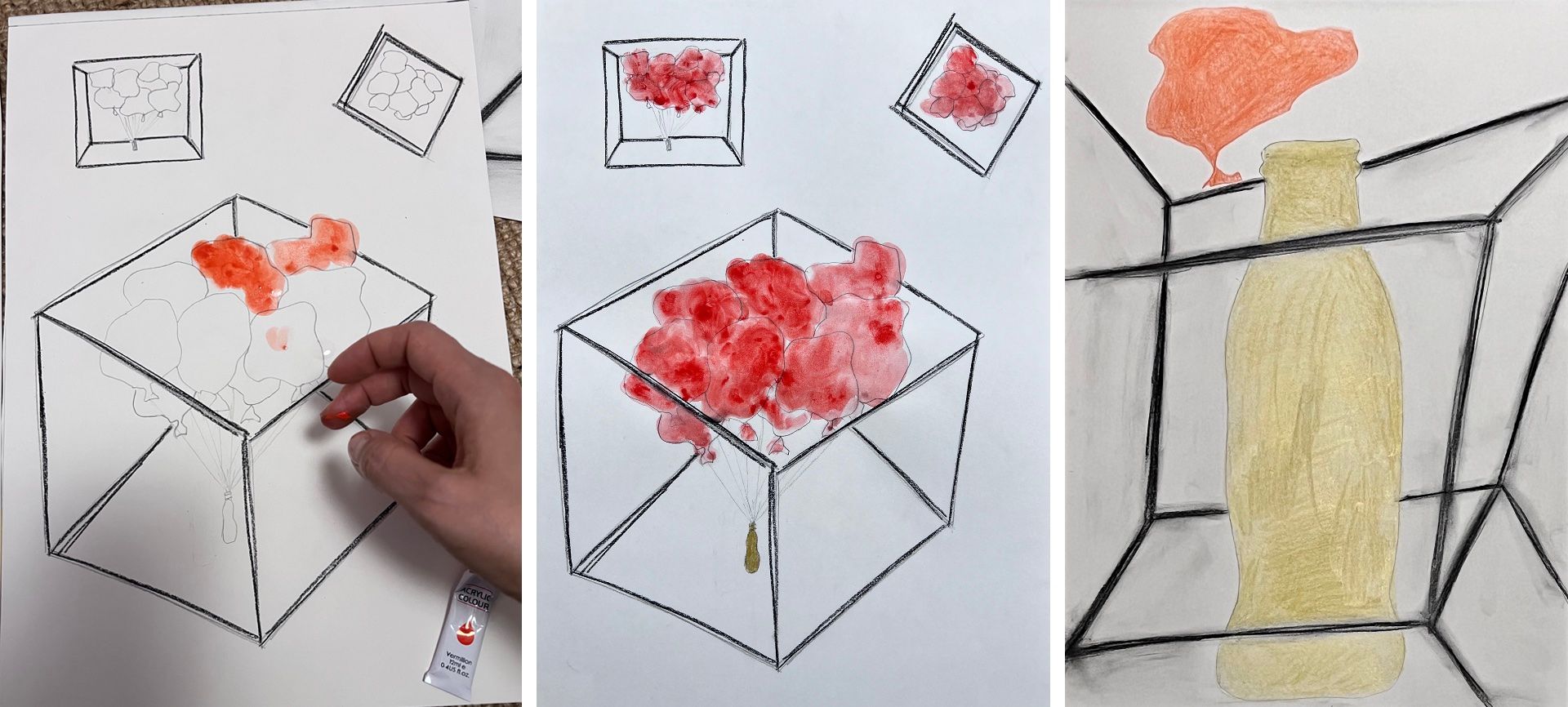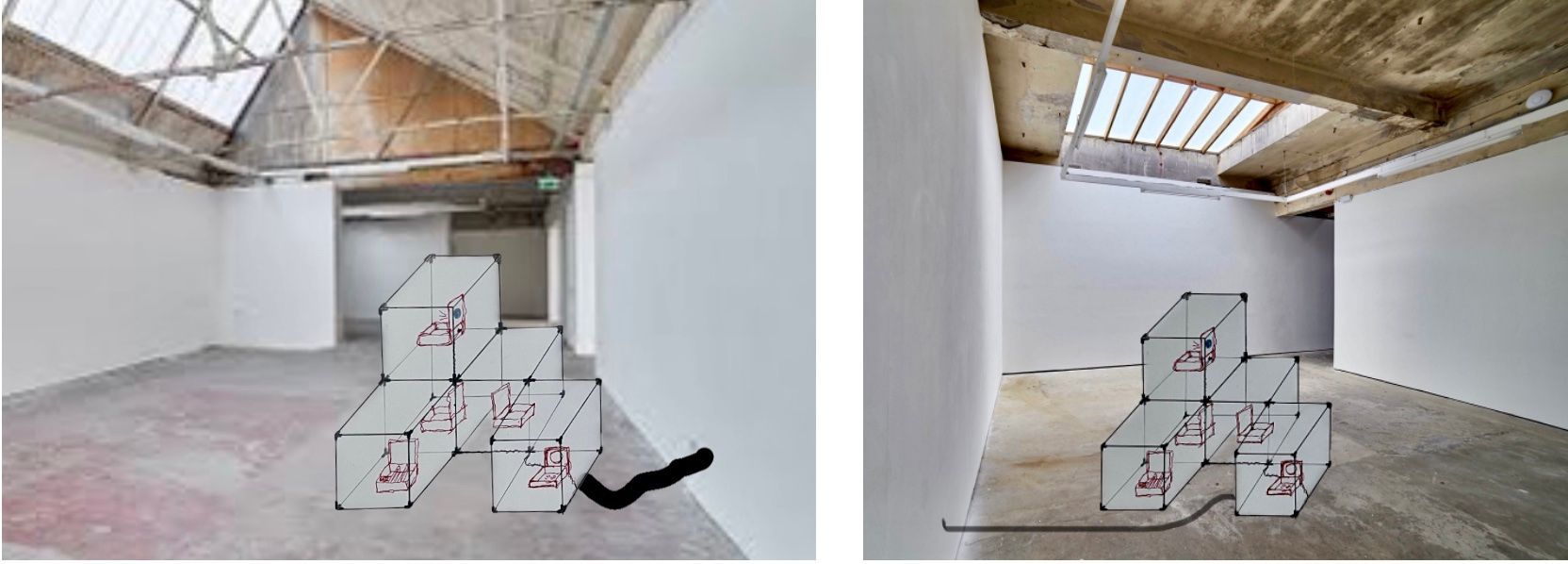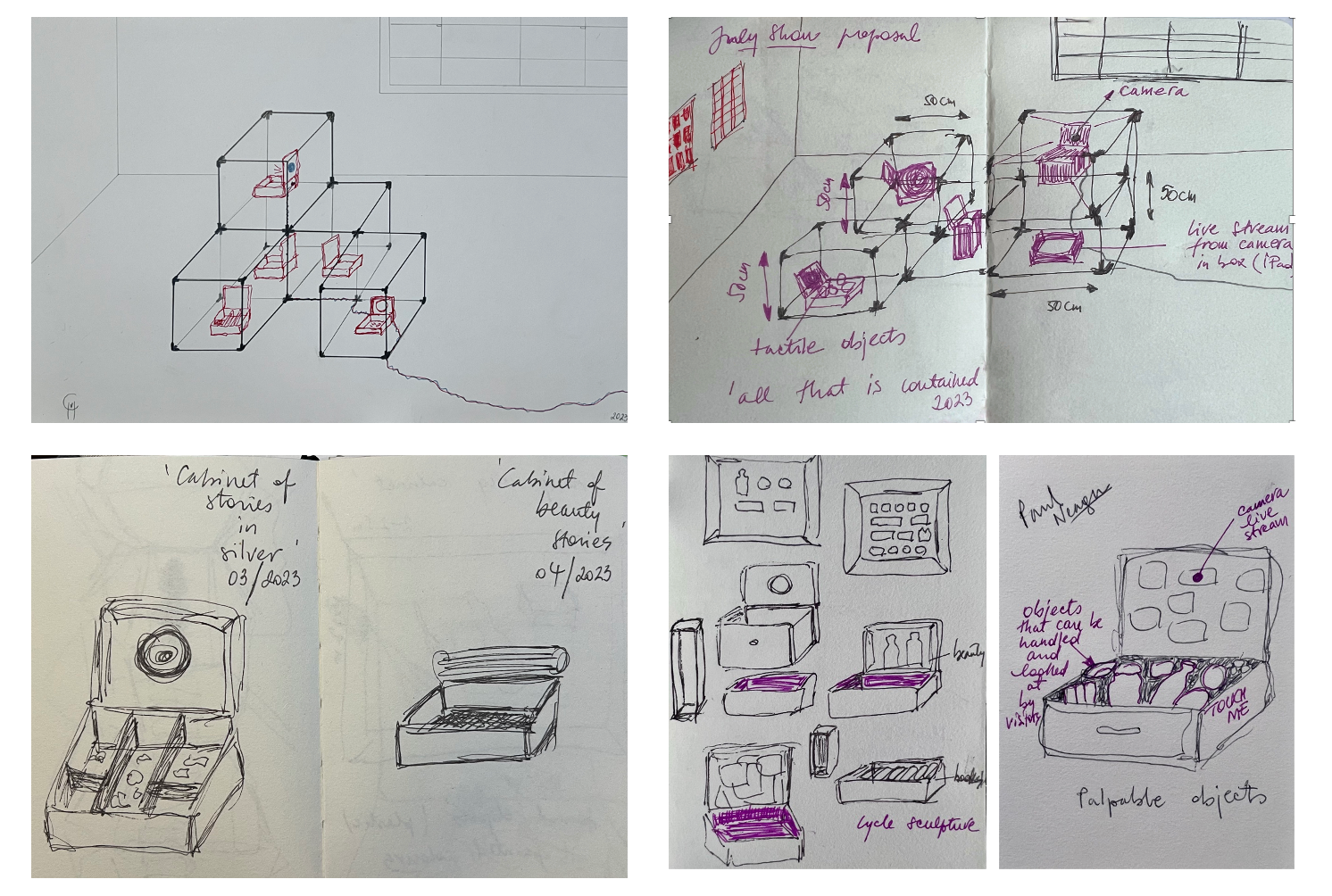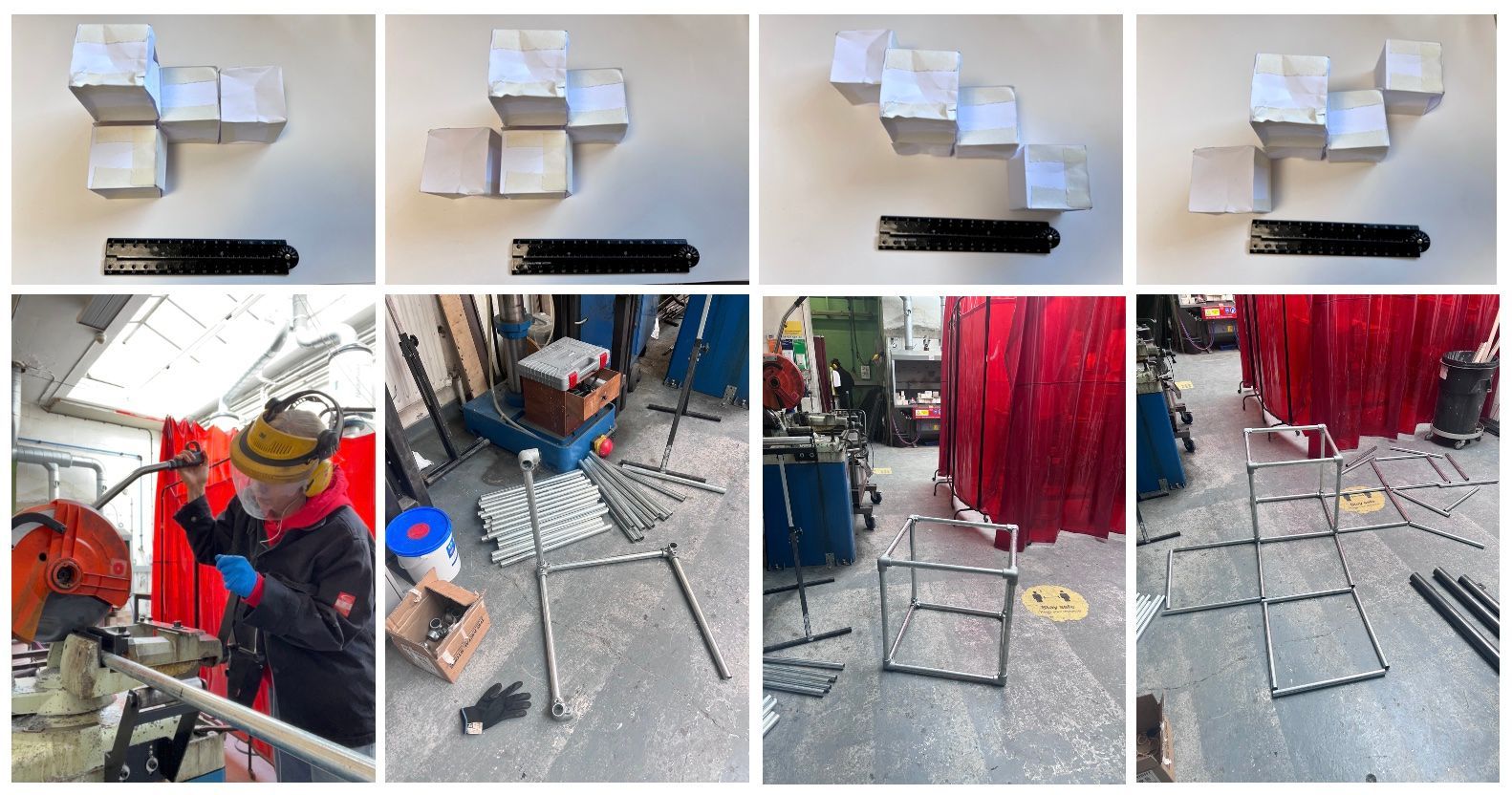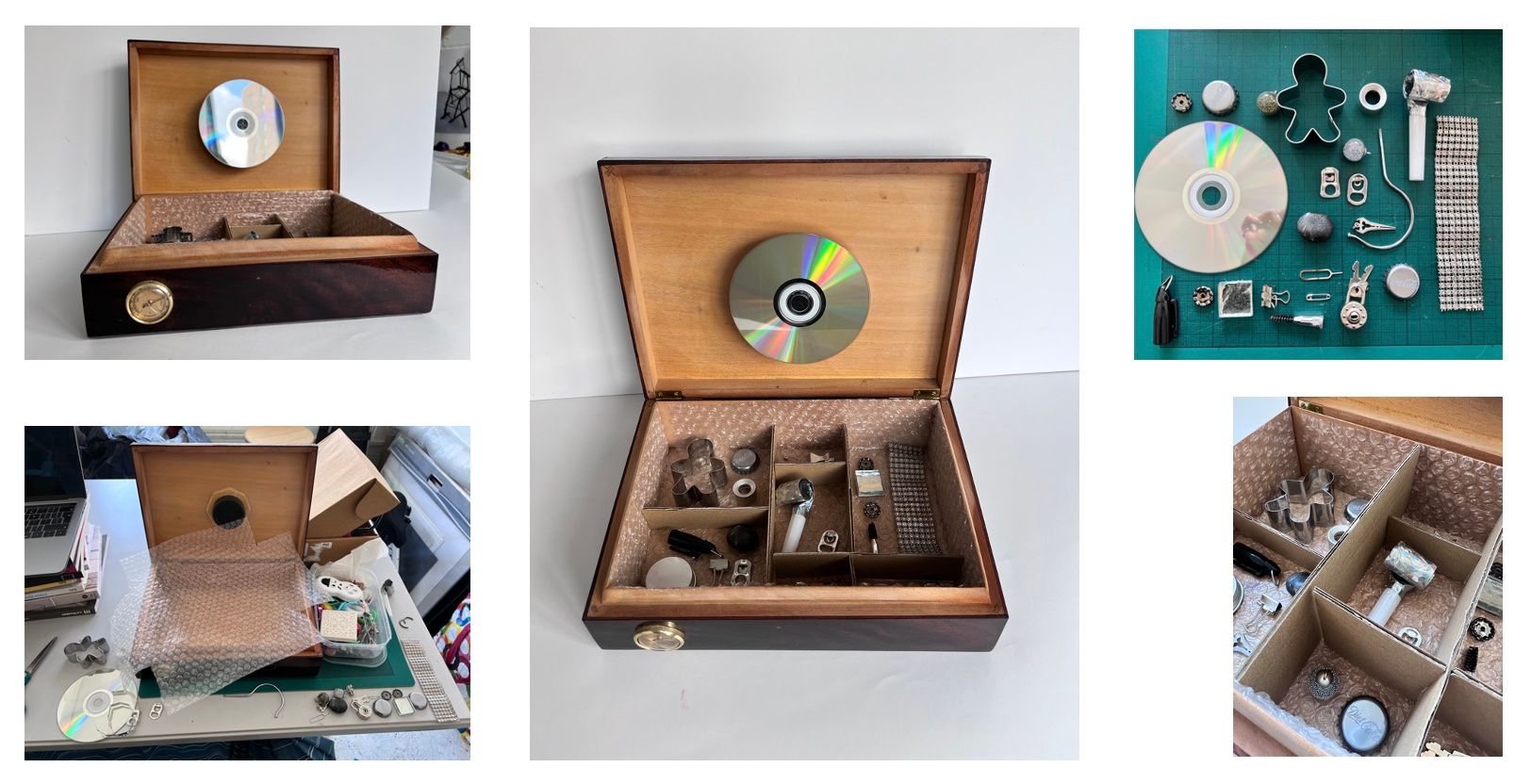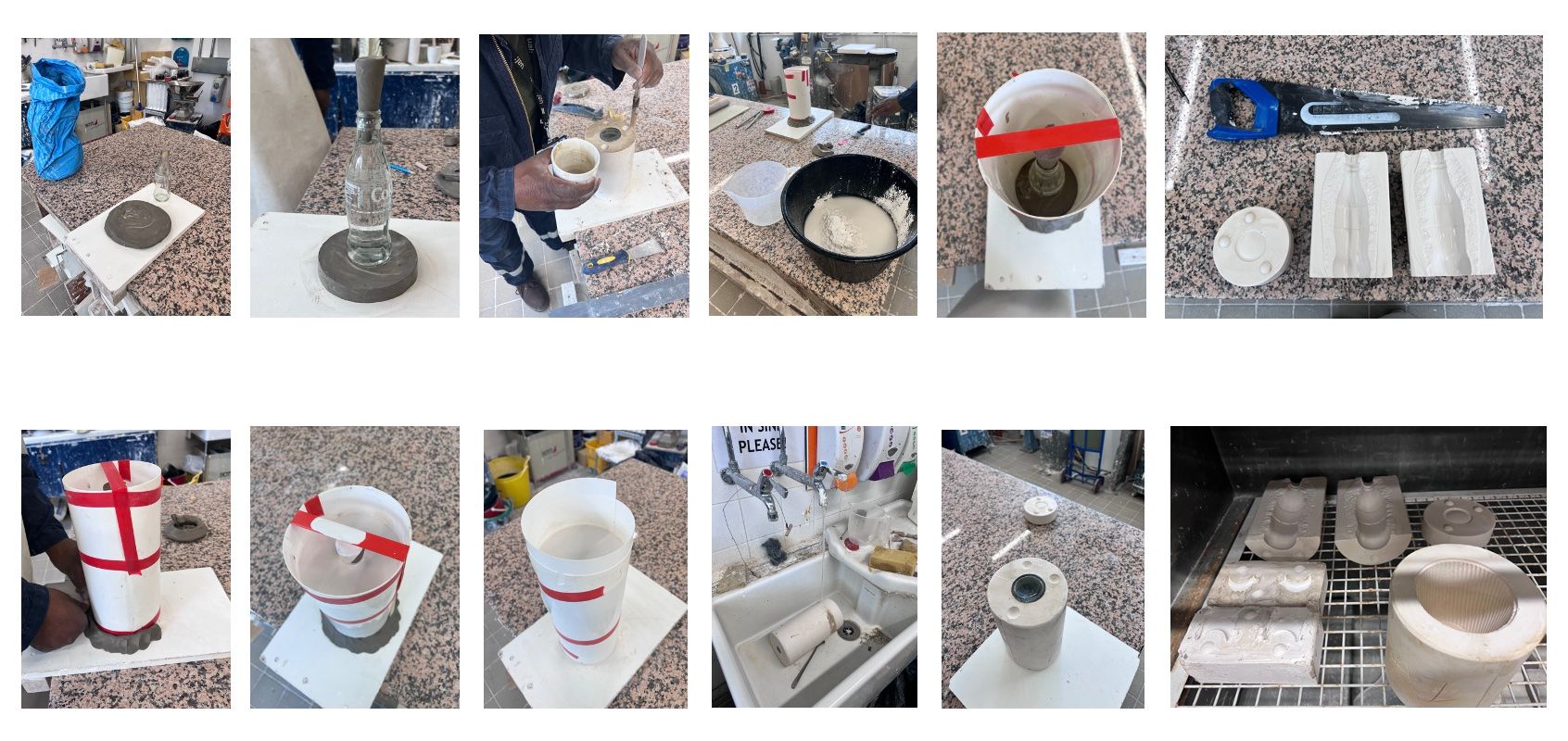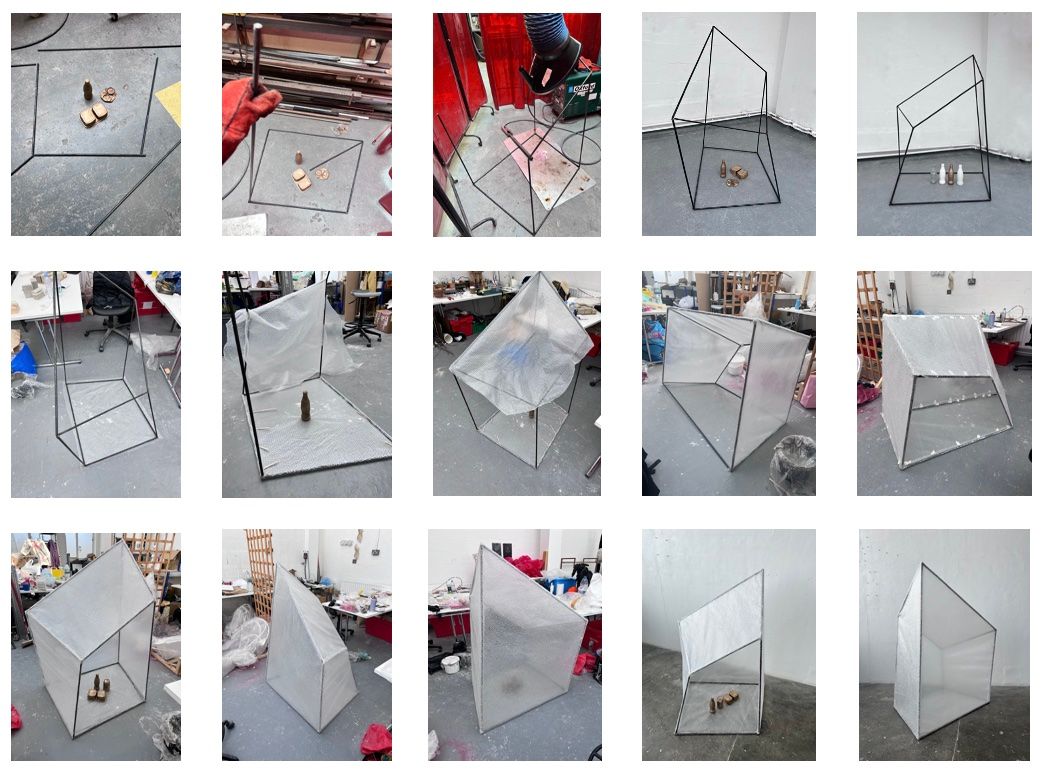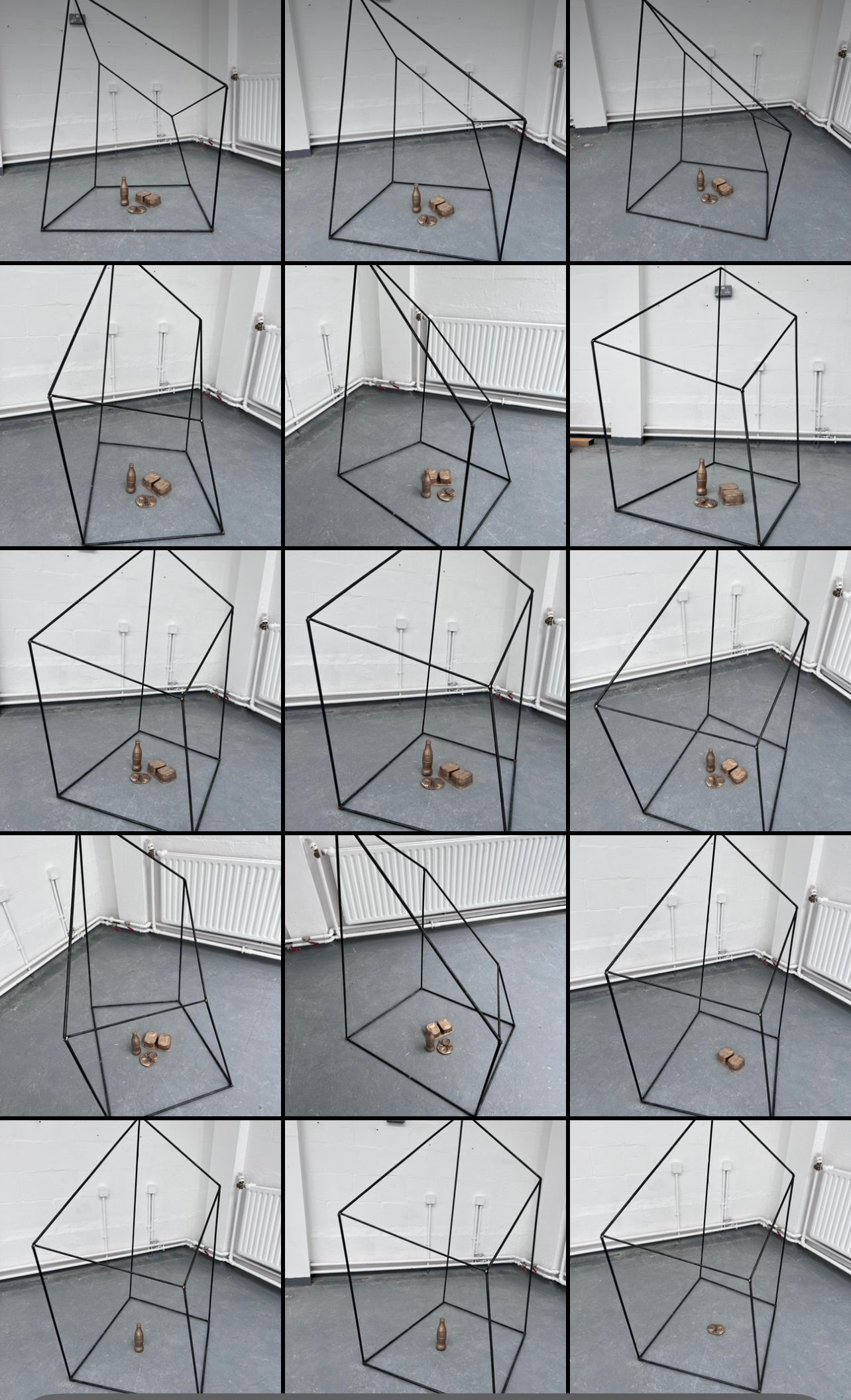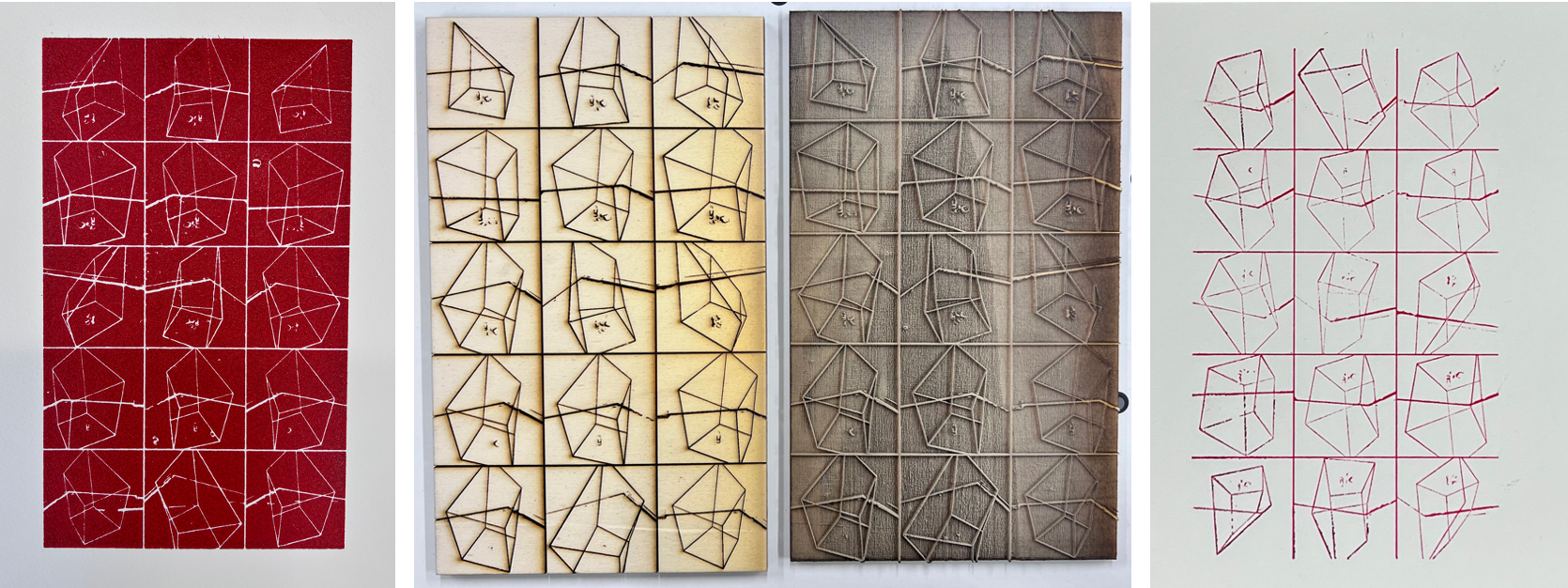Documentation of Artworks & Process
What truly captivates me is the inherent language embedded within materials and their remarkable potential for manipulation and rearrangement. Through this transformative process, I strive to uncover fresh insights and reveal previously unseen truths about the very nature of objects themselves. To initiate this journey, I deliberately select ordinary items such as bottles, cans, and packaging—humble artefacts that once served practical purposes but have now found new purpose in my works.
In a methodical manner, I embark upon the deconstruction and reconstruction of these materials, aiming to convey the essence of transformative processes and modes of production. By dismantling and reassembling these objects, I draw attention to the intricate nature of their construction and the hidden narratives they possess. In doing so, I highlight the pressing need for novel systems that align harmoniously with our ecological environments and the evolving realities of our lived experiences.
Within this creative exploration, household objects assume a pivotal role as the foundation for my artistic inquiries. By employing these familiar items that populate our domestic environments, I intend to establish a connection with viewers on a deeply personal level. Through the manipulation of these objects, I seek to challenge preconceived notions of their intended use and transcend their mundane existence, prompting contemplation on the broader implications of consumption, waste, and our relationship with the material world.
Ultimately, my work stands as a testament to the urgency of reevaluating our systems and fostering an innovative symbiosis between the objects we encounter in our daily lives and the ecological contexts in which they reside. By harnessing the language of materials and engaging in meticulous transformations, I strive to contribute to a broader discourse on sustainable practices, holistic design, and a future that embraces the interconnection between humanity and the environment.
Lost Wax Casting in Bronze and Aluminium
Lost wax casting serves as a remarkable technique for crafting intricate metal objects, wherein a mould is carefully constructed around a sacrificial wax model. Among the available metals for this method, bronze and aluminium stand out prominently. Bronze, in particular, is widely favoured due to its versatility and ease of casting. As the bronze material solidifies, it expands, facilitating the reproduction of even the most delicate details with remarkable accuracy. Subsequently, it contracts during the cooling process, simplifying the removal of the final cast from the mould. Notably, bronze possesses a lower melting point compared to many other metals due to its copper-based composition.
In my practice, I have chosen to utilise recycled household items to fashion sculptures, intending to transform these otherwise discarded objects into works of art with newfound value. By contemplating the casting of these objects in bronze, I aimed to elevate their perceived worth, offering them a renewed sense of significance. This serves as an opportunity to challenge conventional hierarchies of materials and provoke contemplation regarding their inherent value and worth.
Bronze casted objects - process from the mould to almost finished works. Bronze casting has been more successful compared to aluminium casting due to bronze's versatility and ease of casting.
Aluminium casting can present challenges, as some intricate details of the objects may be lost during the casting process. However, there are also notable highlights in terms of the distinct features that can be achieved. Despite the difficulties, I plan to utilise these aluminium casts in new works, finding creative solutions to work around any noticeable defects.
Filet Space Exhibition
In March 2023, the group exhibition titled
Forces of the Small took place at Filet Space, featuring students from MA Camberwell Fine Art courses, along with a few tutors and technical staff from Camberwell College of Art Camberwell. Contemporary art critic, lecturer, and artist Peter Suchin curated the exhibition, which aimed to capture “a playful microcosm of artistic production at the present time".
The exhibition showcased small artworks, each measuring no larger than 7.5 x 10.5 x 7.5 centimetres, without any restrictions on medium, production, or ideas.
As a participant in the show, I was involved in the organisation process, attending preparatory meetings. Prior to the installation, I visited the exhibition space to familiarise myself with the surroundings and facilities, providing valuable feedback during our subsequent meetings.
There were no other rules, apart from the size no larger than 7.5 x 10.5 x 7.5, governing the medium, production, or concept, granting the artists complete freedom.
We showed work alongside our tutors and technical staff that enhanced the excitement of showing work.
During Peter Suchin's lecture The Miniature and Related Themes I sketched a few ideas thinking of the mediums I could use such as ceramics-porcelain, printmaking, assemblages, collages.
Sketchbook pages, thinking of the effects and implications of reducing something in size.
Engaging in the exploration of paper, I experimented with collage and various paper structures. Initially, my intention was to reduce their size. However, a fear lingered within me, suggesting that the miniaturisation of these works might diminish their impact compared to their larger counterparts. As a result, I am considering revisiting these creations but with the opposite objective of scaling them up.
Collaging with red dots. As I contemplated the essence of minimalistic collages, my thoughts were drawn to the red dots typically employed to indicate artwork's sale. Seeking a visually dramatic backdrop, I opted for black paper to amplify the impact. Utilising these recycled red dots aligned with my fascination for the intriguing and potent duality of the colour red. The core of this piece lies in repetition, as it echoes throughout. I believe that these minuscule dots beckon the observer to inspect closely, evoking the timeless Bauhaus maxim: "Less is More."
Making
The Year Was 2075,
2023,
9 x 2.5 x 3.5cm
Assemblage. In the end, the medium that captivated me the most for this project was assemblage. I find it to be the most exhilarating means of expressing my thoughts about the objects I utilise. The inspiration to construct a scaled-down form stemmed from my observation and exploration of Sarah Sze's artworks.
Drawing upon the modernist traditions of found objects, Sze creates encyclopaedic installations brimming with flux, transformation, and delicacy. Her works provoke contemplation on the significance our society attaches to objects and how these objects imbue meaning into the spaces and moments we inhabit.
I am fascinated by the notion that objects can define or become a reflection of the zeitgeist in which they are created. It almost feels like an ecosystem, where materials take on an active and organic role. Sarah Sze's creations transcend the materiality of the objects, and this is precisely what I strive to achieve in my own work.
Through the incorporation of inexpensive, everyday objects in her pieces, Sze emphasises the connection to consumer culture. In doing so, she follows the footsteps of earlier 20th-century art movements like constructivism and abstract art, which themselves mirrored the industrialised world.
In my downscaled artwork, I utilised discarded personal Coca-Cola cans as a medium. By incorporating these soda cans, I aim to delve into a profound commentary on various aspects of consumer culture, waste management, as well as social, political, and environmental concerns.
The choice of Coca-Cola cans as my artistic material holds symbolic significance. Coca-Cola, being one of the most recognised and consumed beverages globally, represents the ubiquity and influence of consumer culture in our society. By re-contextualising these cans within my artwork, I aim to draw attention to the rampant consumerism that permeates our lives, inviting viewers to reflect upon their own consumption habits and the resulting impact on our environment.
Moreover, the repetitive utilisation of soda cans throughout my body of work serves as a visual motif, reinforcing the message I seek to convey. It highlights the sheer magnitude of waste generated by our consumer-driven society and prompts contemplation on the dire consequences of our throwaway culture. By presenting these discarded objects in an artistic context, I invite viewers to reevaluate their perceptions of waste and to question the sustainability of our current lifestyle choices.
With the intention of envisioning a future living space, I embarked on the creation of a unique home-like structure crafted entirely from recycled materials (recycled cans, recycled diary pages, hessian string fro previous works). This endeavour aimed to capture the essence of a dwelling that I envisioned for us in the future—a sustainable haven that harmonises with the environment. Originally, my plan was to suspend this box-shaped creation from the ceiling using hessian string, symbolising a floating abode. However, as the exhibition space presented limitations in terms of available area, I made the decision to securely affix it to the wall instead.
The concept behind this artwork delves into the realm of speculative design, exploring possibilities for an ideal living space that transcends conventional norms. By employing recycled materials, I sought to emphasise the importance of repurposing and minimising waste, while also encouraging viewers to contemplate alternative approaches to construction and sustainable living.
The box-shaped structure, although physically grounded on the wall, represents a metaphorical leap into an imagined future. It embodies the aspirations and dreams of a harmonious coexistence between humanity and the environment. Through this artwork, I aimed to stimulate the viewer's imagination, inviting them to envision a future where sustainable living practices and innovative architectural concepts are at the forefront.
By integrating recycled materials I aspire to inspire a collective shift towards a brighter future—a future where our dwellings are in harmony with the natural world, reflecting our aspirations for a sustainable and thriving planet.
Printmaking
for Filet Space Exhibition
Small Size prints for Filet Space Exhibition. This prints have a Hauntological quality but maybe not as strong as a 3D objects will have.
Printmaking process for the miniature prints using relief and monotype printmaking techniques
Ghost prints. The small size prints have produced fascinating results, as the imprints carry even greater significance compared to the main works due to their association with memory. I intend to research further this concept of absence in Unit 3, further exploring the profound impact these prints can create.
Sketching ideas for the Bargehouse Exhibition
The inspiration for the Bargehouse exhibition came to me during a workshop facilitated by Sara Byers, where we explored the possibilities of working with Willow. At first, I experimented by creating a replica of a Coca-Cola bottle structure, which eventually led me to construct a cube. I was immediately drawn to the cube's form, particularly because it holds significant meaning in the art world. This fascination with the cube prompted me to contemplate themes of constraint and our constant endeavour to break free from limitations, conventions, programming, and any form of restrictions.
I sought inspiration from artists I admire to explore how they confronted the theme of constraint within the limitations of the white cube. Among these artists, Sarah Sze emerged as a particularly intriguing figure.
Making the Bargehouse installation
In my quest for inspiration, I turned to the works of visionary artists whom I admire, delving into their creative explorations of hauntological themes such as constraint, memory, and the enigmatic realms existing within the confines of the white cube. Among the artists whose evocative pieces have stirred my imagination are Sarah Sze, Mike Nelson, Ai Weiwei, Mona Hatoum, Eva Gold, Louise Nevelson, Alexandre da Cunha, and Phillida Barlow.
Drawing inspiration from Sarah Sze's captivating installations, I envisioned an immersive artwork within the white cube that echoes her meticulous construction of fragile environments. Through this installation, I sought to invite viewers to contemplatively explore the transience of our experiences and the fragmented nature of our recollections.
Inspired by the disorienting environments crafted by Mike Nelson, I aimed to create a similar sense of uncanny constraint within my own work. Like Nelson's labyrinthine structures that transport us into forgotten spaces resonating with ghostly whispers of the past, my installation would challenge viewers' perceptions and create an intriguing sense of confinement.
Considering the materiality of the installation, I gravitated towards using metal for the frame. After consulting with Daniel Boyle, a skilled technician at the metal workshop, we decided on detachable metal tubes for easier installation and storage. The concept of reusing the metal also aligned with my intention to incorporate sustainable practices into the artwork.
The cube itself served as a delicate vessel, and within it, a juxtaposition of objects unfolded. A bronze sculpture would be affixed to balloons crafted from disposable toxic refuse bags, filled with helium to make them float. Through this composition, I aimed to evoke a profound sense of duality and conflict, exploring themes of constraint and freedom, lightness and heaviness, value and disposability, as well as the interplay between the grand and the minute.
With this envisioned installation, I aspired to create an immersive and thought-provoking experience that would engage viewers in a contemplation of the intricate dynamics between constraint, memory, and the ethereal nature of our existence within the confines of the white cube.
Constricted Freedom, 2023, Mixed media (Progressive Sculpture)
Evolution Images: Image of photoshopped proposal, Day 1 - Install day view and detail, Day 2 Private View day and detail, Last day view and detail.
The series of images presented above depicts the evolution of the installation at the Bargehouse Exhibition. Initially, I had planned to visit the exhibition daily to replenish the helium in the refuse bags, ensuring they remained inflated. Before the installation, I had conducted tests to gauge the longevity of the bags, knowing that helium would gradually escape over a period of 24 to 36 hours. To prolong their usability, I had treated the bags with a sealing solution.
On the day following the installation, during the exhibition's opening, I noticed that the bags had already started to deflate. Surprisingly, instead of causing frustration and prompting me to replenish the helium, the transformation intrigued me. It made me ponder the process of change and its impact on the artwork. I found myself wishing I had captured the deflation on record. This shift in focus, prioritising the deconstruction of the installation over its aesthetic appeal, became a profound inspiration for my work in the Summer Show, igniting a desire to incorporate surveillance elements into my new work.
Constricted Freedom –
Living, Dreaming, City Life, Hoping, 2023, Refuse bags, helium, 100 x 100 x 100cm
After dismantling the exhibition at the Bargehouse Gallery, I was inspired to create these artworks. The bags, which were used in the installation, had not fully deflated, still containing traces of helium on the final day. This lingering presence of helium added a touch of hope, symbolising the potential for future artistic endeavours. It resonates deeply with the goals of my practice, which revolve around recycling, upcycling, and remaking. These works serve as a reminder that no matter what challenges we face, life continues to move forward.
Constricted Freedom
Drawaings in charcoal and acrylic paint
Based on the
Constricted Freedom drawing I laser printed the image on a wooden board which later on became the base of a relif print.
For laser cutting, I opted for birch laser plywood, which proved to be an ideal choice. Birch is a hardwood that strikes a balance between density and ease of use, making it highly suitable for my purposes. Additionally, birch plywood is widely accessible, further facilitating its utilisation. Its smooth and consistent cutting properties make it an excellent material for laser cutting.
To preserve the memory of the installation, I decided to create a 2D image of the artwork. This visual representation serves as a reminder of the project and its significance. Furthermore, I intend to recycle the metal components used in the installation for future works. By repurposing the materials, I aim to give them new life and incorporate them into upcoming works.
Proposal for Summer Show Installation,
All That Is Contained,
2023, Mixed media, 150 x 100 x 100cm
Proposed exhibition view All That is Contained, 2023 (room is naturally light, ideally a large room); One of the boxes of stories – detail
I will exhibit a mixed media installation, a continuation of the Bargehouse exhibition work. Titled
All That Is Contained, it will be made of recycled metal and found objects.
The installation comprises two intertwined parts: a sculpture and a video element. The sculpture is a cluster of five connected metal cubes that each contains a box with objects. Four cubes are directly located on the floor and the fifth one is situated on one of the other cubes. The box in the raised cube will contain objects that can be handled by visitors. In the same upper box will be a live camera that streams a live video feed to an Ipad in one of the boxes below (see drawings). It is a direct live stream without being recorded.
Dimensions: Each cube is 50 x 50cm, Length 150cm, Width 100cm, Height 100cm
Drawings for All That is Contained installation
This artwork draws inspiration from the tangible creations of Paul Neagu, a Romanian/British artist known for his intricate constructions. Neagu's works often incorporate movable or hinged components, inviting physical interaction from viewers. His approach has deeply influenced my own artistic concept.
In this piece, I have incorporated Neagu's idea of engaging the audience by including a upper box that contains replicas of objects. These replicas are designed to be handled and explored by visitors, encouraging a tactile and interactive experience. This concept of physical interaction aligns with Neagu's philosophy and adds a dynamic layer to the artwork, inviting viewers to actively participate in the exploration of the installation.
The handling of the objects is filmed and can be viewed by other visitors watching the live stream of the IPad located in another box. The visitors handling the objects will not be able to see their own live streamed video as the boxes will be on the opposite ends of the installation. This creates the disconnection I’m looking for.
These are the drawings depicting my ideas for the Summer Show. Initially, I envisioned a composition consisting of a pile of remade objects, onto which I would project images of people interacting with familiar items. However, due to the limited time available for production, I was unable to create as many objects as I had envisioned. Consequently, I made the decision to alter my approach and pursue the cube option instead.
During the process of creating the cubes, I utilised recycled metal frames from my previous artwork,
Constricted Freedom, exhibited at the Bargehouse Gallery in April 2023. Repurposing these frames was an important aspect of this new work. To assist in arranging the final five cubes for display, I relied on paper cubes, which allowed me to visualise and determine their optimal arrangement. Additionally, the paper cubes served as a helpful tool for counting and ensuring the correct placement of the clamps needed for assembly.
As part of this project, I have incorporated a fascinating element: a box of stories for each cube. These boxes are filled with objects that hold significant meaning and personal narratives. Each box serves as a vessel for encapsulating stories, memories, and emotions. These objects, carefully selected and curated, contribute to the overall narrative and thematic exploration of the artwork.
By including these box of stories within each cube, I aim to create a multi-layered experience for viewers. As they engage with the installation, they can not only observe the visual aspects of the cubes but also delve into the narratives embedded within each box. These objects act as tangible representations of individual experiences and offer a unique perspective into the lives and journeys that have shaped them.
The box of stories invites viewers to interact and connect with the artwork on a deeper level. It sparks curiosity and encourages contemplation, as each object holds a story waiting to be discovered. Through this inclusion, the artwork becomes more than just a visual display; it becomes a gateway to personal narratives, fostering a sense of empathy and connection with the human experiences captured within the installation.
Samples of remade objects
The objects contained within the box of stories are meticulously crafted using a variety of materials, including plaster, bronze, wax, 3D printing, and aluminium. Each material brings its unique characteristics and textures, contributing to the visual and tactile qualities of the objects.
Plaster, with its smooth and versatile nature, allows for intricate details and precise sculpting. The use of bronze adds a touch of elegance and permanence, capturing the essence of time and durability. Wax, on the other hand, provides a malleable quality, allowing for organic forms and textures to be achieved.
The incorporation of 3D printing introduces a modern and innovative approach, enabling the creation of complex geometries and intricate designs. This technique opens up possibilities for pushing the boundaries of traditional craftsmanship.
Lastly, aluminium, with its lightweight and metallic allure, adds a contemporary touch to the objects. Its reflective properties and sleek finish create a sense of modernity and playfulness within the overall composition.
By employing a diverse range of materials, the remade objects within the box of stories reflect not only the multiplicity of experiences but also the varied ways in which memories and narratives can be embodied. The combination of these materials enhances the sensory experience, engaging both sight and touch, and inviting viewers to immerse themselves fully in the stories woven into the artwork.
Mould making process - making a replica of a coca-cola bottle.
Mould making is a process used to create reproductions of three-dimensional objects. It involves the careful construction of a mould, typically made from materials like silicone, plaster, or rubber, around the original object. The mould captures the object's shape and details, allowing for the creation of multiple replicas. The process includes preparing the object, applying release agents to prevent sticking, and pouring the mould material around the object. Once the mould material has set and cured, the original object is removed, leaving behind a negative impression. This negative mould can then be filled with various materials, such as resin or wax, to produce accurate and identical reproductions of the original object.
The works of Ai Weiwei have been a profound source of inspiration for me, particularly in how he approaches history and prompts us to reevaluate our values in an era dominated by production and consumerism.
Ai Weiwei's exploration of the tension between the past and present, as well as the dichotomy between the precious and worthless, construction and destruction, resonates deeply with the themes at the core of my own artistic practice. Like him, I strive to transform seemingly useless everyday objects into items of value and significance, compelling viewers to reassess their perception of these objects and recognise their inherent worth.
By repurposing and elevating these ordinary items, I aim to draw attention to the true value they possess beyond their superficial appearance. Through my work, I seek to provoke contemplation and challenge societal notions of value, inviting viewers to reexamine their relationship with the material world and reconsider the ways in which we assign meaning and worth to objects.
Now You See Me, 2023, Mixed media
Drawing ideas for a new work I developed along the Bargehouse Exhibition work.
In my practice, I aimed to present bronze replicas of modest objects in a manner that provokes viewers to question the value we assign to things. This exploration delves into the realms of consumerism and personal experiences. In seeking inspiration, I drew ideas from the works of Mona Hatoum, Louise Nevelson, and Alexandre da Cunha.
Mona Hatoum's sculptures and installations leave a profound impact, evoking a sense of confinement and constraint. Through her own experiences of displacement and estrangement, Hatoum prompts us to examine the physical and mental boundaries that confine us. Her thought-provoking works challenge us to confront our limitations and contemplate the complex relationship between memory, burden, and empowerment.
Louise Nevelson, a pioneering sculptor, has mastered the art of transforming discarded materials into poetic assemblages. Her monumental, monochromatic sculptures transcend their humble origins, inviting us to reflect on the transformative power of memory. Nevelson's works emphasise the significance of forgotten fragments that compose our personal narratives, urging us to recognise their inherent value.
Alexandre da Cunha's innovative approach to sculpture embraces found objects and materials. He breathes new life into discarded and overlooked artifacts, subverting their original functions. By repurposing these objects within the context of the white cube, da Cunha challenges us to reconsider the constraints imposed by the mundane. Through his work, he invites us to uncover hidden narratives within the familiar and discover new perspectives.
Incorporating elements inspired by these artists, I strive to evoke a similar sense of introspection, pushing the boundaries of perception and shedding light on the intricate relationships we have with objects, consumerism, and our past experiences.
The making of
Now You See Me,
2023, Mixed Media
For this particular artwork, I employed a welding technique to join together various found metal rods, shaping them into an off-cube form. To emphasise the theme of consumerism, I covered the structure with bubble wrap, which serves as a metaphorical representation of the excessive packaging and materialistic nature of our consumer-driven society.
The juxtaposition of the welded metal rods and the bubble wrap creates an intriguing visual contrast, highlighting the tension between protection and visibility. The bubble wrap acts as a shield, symbolising our instinct to safeguard valuable objects, while simultaneously exposing them for observation.
The objects in the off-cube add another layer of depth and meaning to the artwork, inviting viewers to engage with the tangible representations of individual experiences and stories.
By combining the welded metal structure, the bubble wrap, and the bronze objects, the artwork aims to spark contemplation and reflection on the themes of consumerism and value. It encourages viewers to question the relationship between material possessions, their intrinsic worth, and the layers of protection we create around them.
Now you see me on repeat,
2023, metal and bronze
Through this repetition, the artwork takes on a mesmerizing quality, creating a rhythm and pattern that both soothes and stimulates the senses. It encourages viewers to question the significance and meaning behind the repeated imagery, as it evolves and transforms with each iteration.
Furthermore, the repetition in this work opens up possibilities for various interpretations and narratives. It allows for different perspectives and connections to be made, as viewers engage with the images on a more intimate level. The repetition becomes a tool for introspection, inviting personal reflection and discovery.
The concept of repetition in the artwork
Now You See Me II
has greatly influenced my creative process, leading me to incorporate it into a new piece using relief printing techniques in a 2D format. To experiment with visual compositions, I employed laser cutting to create both the original image and its negative shape.
By employing relief printing, I aim to explore the interplay of light and shadow, depth and texture, that can be achieved through this technique. The repetition of the image adds a rhythmic quality to the artwork, enhancing its visual impact and inviting viewers to engage with it on a deeper level.
Moving forward, I plan to further develop and refine these works in Unit 3, allowing me to delve deeper into the possibilities offered by relief printing and the exploration of compositional elements. Through this process, I hope to uncover new dimensions and meanings within the repeated imagery, while also pushing the boundaries of my artistic practice.

